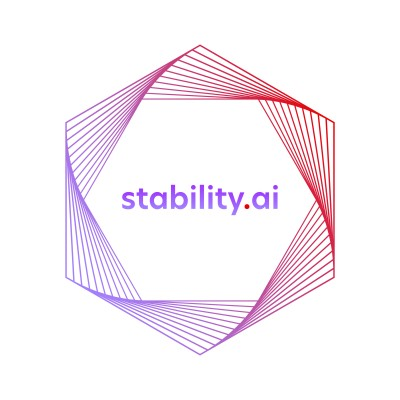The Encryption Arms Race: Safeguarding AI Models in a Digital Battlefield
September 25, 2024, 10:22 am

Location: United States, California, San Francisco
Employees: 201-500
Founded date: 2015
Total raised: $18.07B
In the world of artificial intelligence, large language models (LLMs) are the titans of the digital age. They are the engines driving innovation, creativity, and automation. Yet, as their power grows, so do the threats surrounding them. The encryption of these models is no longer a mere technical consideration; it has become a matter of survival in a landscape riddled with legal battles, intellectual property theft, and cyber warfare.
Imagine a fortress. Its walls are high, its gates are fortified. But what happens when the enemy finds a way to breach those walls? This is the dilemma facing companies like OpenAI, NVIDIA, and Microsoft. They are locked in a race not just to innovate but to protect their intellectual property from a barrage of attacks. The stakes are high, and the methods of attack are evolving.
At the heart of this struggle is the issue of data encryption. It’s not just about securing user queries or model outputs. It’s about the entire lifecycle of data—from the moment it enters the model to the time it leaves. The data used to train these models is often proprietary, protected by a web of legal agreements and copyrights. Yet, as the demand for high-quality training data surges, so does the temptation to cut corners. Companies are increasingly accused of scraping content from various sources without proper authorization, leading to a flurry of lawsuits.
The recent scandal involving NVIDIA serves as a stark reminder. Allegations surfaced that the company sourced data not only from legitimate platforms but also from pirated sites. This is not an isolated incident. The digital landscape is littered with similar stories, each highlighting the precarious balance between innovation and legality. The battle for content is fierce, and the rules of engagement are murky at best.
As the encryption landscape evolves, so do the techniques employed to safeguard data. One promising approach is the use of EmojiCrypt, a method that encodes user data in a way that is unintelligible to both humans and LLMs. This innovative technique preserves the essence of the original input while ensuring confidentiality. It’s akin to speaking in code—only those who know the key can understand the message.
However, encryption is not a silver bullet. The challenges of data leakage remain significant. Even with advanced encryption methods, vulnerabilities can be exploited. For instance, if an adversary discovers the encryption method, they may devise ways to circumvent it. This is where the concept of homomorphic encryption comes into play. It allows computations to be performed on encrypted data without needing to decrypt it first. This means that sensitive information can remain protected even during processing.
Yet, even homomorphic encryption has its limitations. The complexity of the algorithms involved can make them slow and resource-intensive. In a world where speed is of the essence, this can be a significant drawback. Moreover, as quantum computing advances, the very foundations of current encryption methods may be called into question. The looming threat of quantum algorithms capable of breaking traditional encryption methods adds another layer of urgency to the encryption arms race.
The battlefield is not limited to software. Hardware plays a crucial role in this struggle. Companies like OpenAI are developing their own chips to reduce reliance on NVIDIA’s technology. This move is not just about performance; it’s a strategic maneuver to regain control over the entire ecosystem. The emergence of new players in the hardware space signals a shift in power dynamics, with established giants facing challenges from nimble startups.
As the encryption arms race heats up, the need for robust security measures becomes paramount. Tools like LLM-Guard and various cyber-security frameworks are being developed to protect against potential breaches. These tools serve as the first line of defense, monitoring for anomalies and potential threats. However, they are only part of the solution. A multi-layered approach to security is essential, combining encryption, monitoring, and rapid response capabilities.
The implications of these developments extend beyond the tech industry. As AI becomes more integrated into everyday life, the potential for misuse grows. The ethical considerations surrounding data privacy and security are more pressing than ever. Companies must navigate a complex landscape of regulations and public expectations while striving to innovate.
In conclusion, the encryption of AI models is a high-stakes game. It’s a battle for survival in a digital landscape fraught with challenges. As companies race to protect their intellectual property, they must also consider the broader implications of their actions. The future of AI depends not only on technological advancements but also on the ethical frameworks that govern its use. The encryption arms race is just beginning, and its outcome will shape the future of artificial intelligence for years to come.
In this digital battlefield, vigilance is key. The fortress must be fortified, not just against external threats but also against the ethical dilemmas that arise in the pursuit of progress. The journey ahead is fraught with challenges, but with innovation and integrity, the promise of AI can be realized without compromising the values that underpin it.
Imagine a fortress. Its walls are high, its gates are fortified. But what happens when the enemy finds a way to breach those walls? This is the dilemma facing companies like OpenAI, NVIDIA, and Microsoft. They are locked in a race not just to innovate but to protect their intellectual property from a barrage of attacks. The stakes are high, and the methods of attack are evolving.
At the heart of this struggle is the issue of data encryption. It’s not just about securing user queries or model outputs. It’s about the entire lifecycle of data—from the moment it enters the model to the time it leaves. The data used to train these models is often proprietary, protected by a web of legal agreements and copyrights. Yet, as the demand for high-quality training data surges, so does the temptation to cut corners. Companies are increasingly accused of scraping content from various sources without proper authorization, leading to a flurry of lawsuits.
The recent scandal involving NVIDIA serves as a stark reminder. Allegations surfaced that the company sourced data not only from legitimate platforms but also from pirated sites. This is not an isolated incident. The digital landscape is littered with similar stories, each highlighting the precarious balance between innovation and legality. The battle for content is fierce, and the rules of engagement are murky at best.
As the encryption landscape evolves, so do the techniques employed to safeguard data. One promising approach is the use of EmojiCrypt, a method that encodes user data in a way that is unintelligible to both humans and LLMs. This innovative technique preserves the essence of the original input while ensuring confidentiality. It’s akin to speaking in code—only those who know the key can understand the message.
However, encryption is not a silver bullet. The challenges of data leakage remain significant. Even with advanced encryption methods, vulnerabilities can be exploited. For instance, if an adversary discovers the encryption method, they may devise ways to circumvent it. This is where the concept of homomorphic encryption comes into play. It allows computations to be performed on encrypted data without needing to decrypt it first. This means that sensitive information can remain protected even during processing.
Yet, even homomorphic encryption has its limitations. The complexity of the algorithms involved can make them slow and resource-intensive. In a world where speed is of the essence, this can be a significant drawback. Moreover, as quantum computing advances, the very foundations of current encryption methods may be called into question. The looming threat of quantum algorithms capable of breaking traditional encryption methods adds another layer of urgency to the encryption arms race.
The battlefield is not limited to software. Hardware plays a crucial role in this struggle. Companies like OpenAI are developing their own chips to reduce reliance on NVIDIA’s technology. This move is not just about performance; it’s a strategic maneuver to regain control over the entire ecosystem. The emergence of new players in the hardware space signals a shift in power dynamics, with established giants facing challenges from nimble startups.
As the encryption arms race heats up, the need for robust security measures becomes paramount. Tools like LLM-Guard and various cyber-security frameworks are being developed to protect against potential breaches. These tools serve as the first line of defense, monitoring for anomalies and potential threats. However, they are only part of the solution. A multi-layered approach to security is essential, combining encryption, monitoring, and rapid response capabilities.
The implications of these developments extend beyond the tech industry. As AI becomes more integrated into everyday life, the potential for misuse grows. The ethical considerations surrounding data privacy and security are more pressing than ever. Companies must navigate a complex landscape of regulations and public expectations while striving to innovate.
In conclusion, the encryption of AI models is a high-stakes game. It’s a battle for survival in a digital landscape fraught with challenges. As companies race to protect their intellectual property, they must also consider the broader implications of their actions. The future of AI depends not only on technological advancements but also on the ethical frameworks that govern its use. The encryption arms race is just beginning, and its outcome will shape the future of artificial intelligence for years to come.
In this digital battlefield, vigilance is key. The fortress must be fortified, not just against external threats but also against the ethical dilemmas that arise in the pursuit of progress. The journey ahead is fraught with challenges, but with innovation and integrity, the promise of AI can be realized without compromising the values that underpin it.
